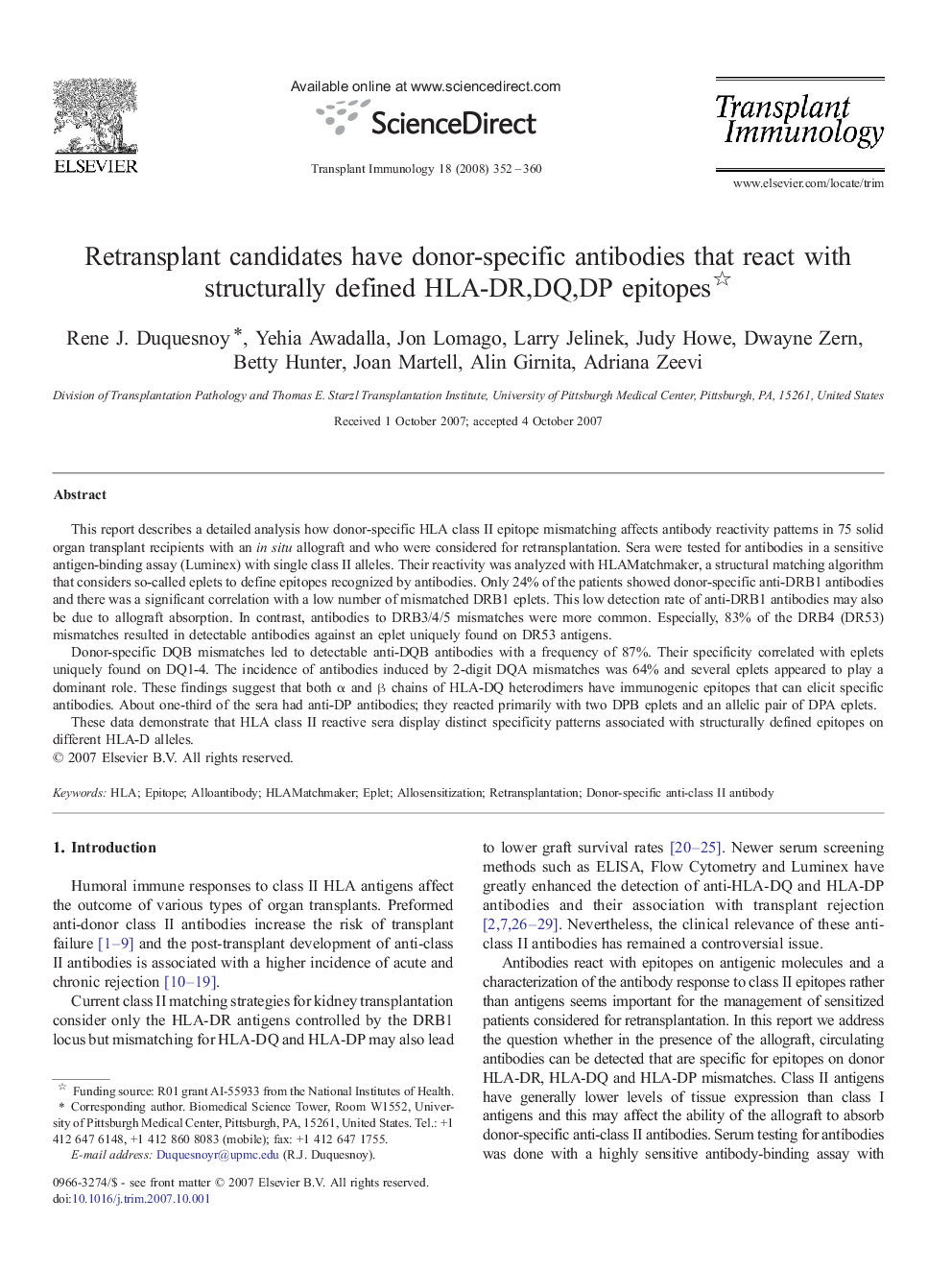| Article ID | Journal | Published Year | Pages | File Type |
|---|---|---|---|---|
| 3392623 | Transplant Immunology | 2008 | 9 Pages |
This report describes a detailed analysis how donor-specific HLA class II epitope mismatching affects antibody reactivity patterns in 75 solid organ transplant recipients with an in situ allograft and who were considered for retransplantation. Sera were tested for antibodies in a sensitive antigen-binding assay (Luminex) with single class II alleles. Their reactivity was analyzed with HLAMatchmaker, a structural matching algorithm that considers so-called eplets to define epitopes recognized by antibodies. Only 24% of the patients showed donor-specific anti-DRB1 antibodies and there was a significant correlation with a low number of mismatched DRB1 eplets. This low detection rate of anti-DRB1 antibodies may also be due to allograft absorption. In contrast, antibodies to DRB3/4/5 mismatches were more common. Especially, 83% of the DRB4 (DR53) mismatches resulted in detectable antibodies against an eplet uniquely found on DR53 antigens.Donor-specific DQB mismatches led to detectable anti-DQB antibodies with a frequency of 87%. Their specificity correlated with eplets uniquely found on DQ1-4. The incidence of antibodies induced by 2-digit DQA mismatches was 64% and several eplets appeared to play a dominant role. These findings suggest that both α and β chains of HLA-DQ heterodimers have immunogenic epitopes that can elicit specific antibodies. About one-third of the sera had anti-DP antibodies; they reacted primarily with two DPB eplets and an allelic pair of DPA eplets.These data demonstrate that HLA class II reactive sera display distinct specificity patterns associated with structurally defined epitopes on different HLA-D alleles.
